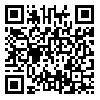BibTeX | RIS | EndNote | Medlars | ProCite | Reference Manager | RefWorks
Send citation to:
URL: http://ijeee.iust.ac.ir/article-1-867-en.html
This paper investigates the effect of metallic sheaths on losses and temperature of medium voltage power cables. Two grounding methods of sheaths, including both ends bonding and single point bonding that causes different situations on cable ampacity, are considered. Electrical losses of cables that are main sources of heat are calculated in both conductor and metallic sheath of the cables. Sheathed and unsheathed medium voltage single conductor cables in flat and trefoil formations with different distances are considered, while calculated losses are compared in different constructions. Calculations of resistive losses are performed based on finite element method (FEM) and IEC standard formulations. The results of two methods are compared and analyzed. Moreover, the effects of eddy currents and circulating currents of sheath on total resistive losses are evaluated. Finally, thermal analysis based on FEM is executed to achieve maximum temperature of cable in different constructions. Simulation results show the importance of metallic sheaths and grounding system effects in power cable ampacity analysis.
Received: 2015/11/25 | Revised: 2017/08/23 | Accepted: 2016/02/10
| Rights and permissions | |
 |
This work is licensed under a Creative Commons Attribution-NonCommercial 4.0 International License. |








